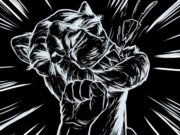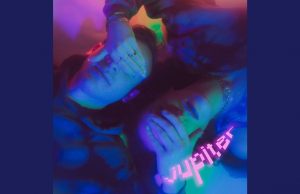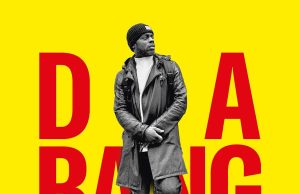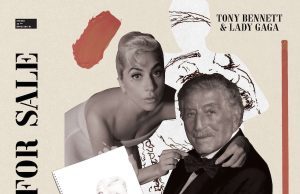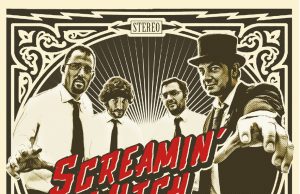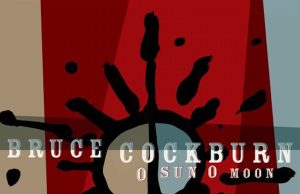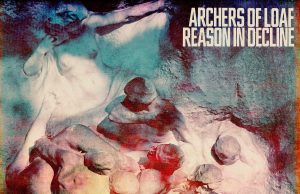THE EDITED PRESS RELEASE: “Modern Classic Recordings, an imprint of celebrated archival label Light in the Attic, proudly announce deluxe vinyl reissues of Morphine’s final two studio albums: Like Swimming (1997) and The Night (2000). The release mark the very first availability of both titles on wax.
Due Sept. 8 and available to pre-order now, each album has been lovingly remastered by Pete Weiss at Boston’s Jade Cow Music, with lacquers cut by John Golden. Both titles were pressed at Austin, TX’s Gold Rush Vinyl and are each available in two colorways. The Like Swimming LP (featuring such favourites as Early to Bed, French Fries with Pepper and Eleven O’Clock) is being offered on opaque blue or translucent red wax, while the 2-LP, 45-RPM edition of The Night (featuring Rope on Fire, Top Floor, Bottom Buzzer and The Night) is available on translucent orange or purplish hue wax.
Rounding out each package is a 20-page booklet featuring rare and never-before-seen images from the band’s archives (including photos by Lana Z. Caplan and Danny Clinch, artifacts from Morphine’s career, and unseen art by the band’s late frontman Mark Sandman). A major highlight of both packages are the insightful new liner notes by Ryan H. Walsh — a Boston journalist, musician, visual artist, and author of the acclaimed 2018 book Astral Weeks: A Secret History of 1968. Walsh’s notes include a handful of new interviews detailing the band’s career, including one of the final interviews with Morphine drummer Billy Conway, who sadly passed away in 2021 following a battle with cancer. Both albums are housed in deluxe gatefold jackets, featuring gorgeous art direction and design by Darryl Norsen at D. Norsen Design, also of Boston.
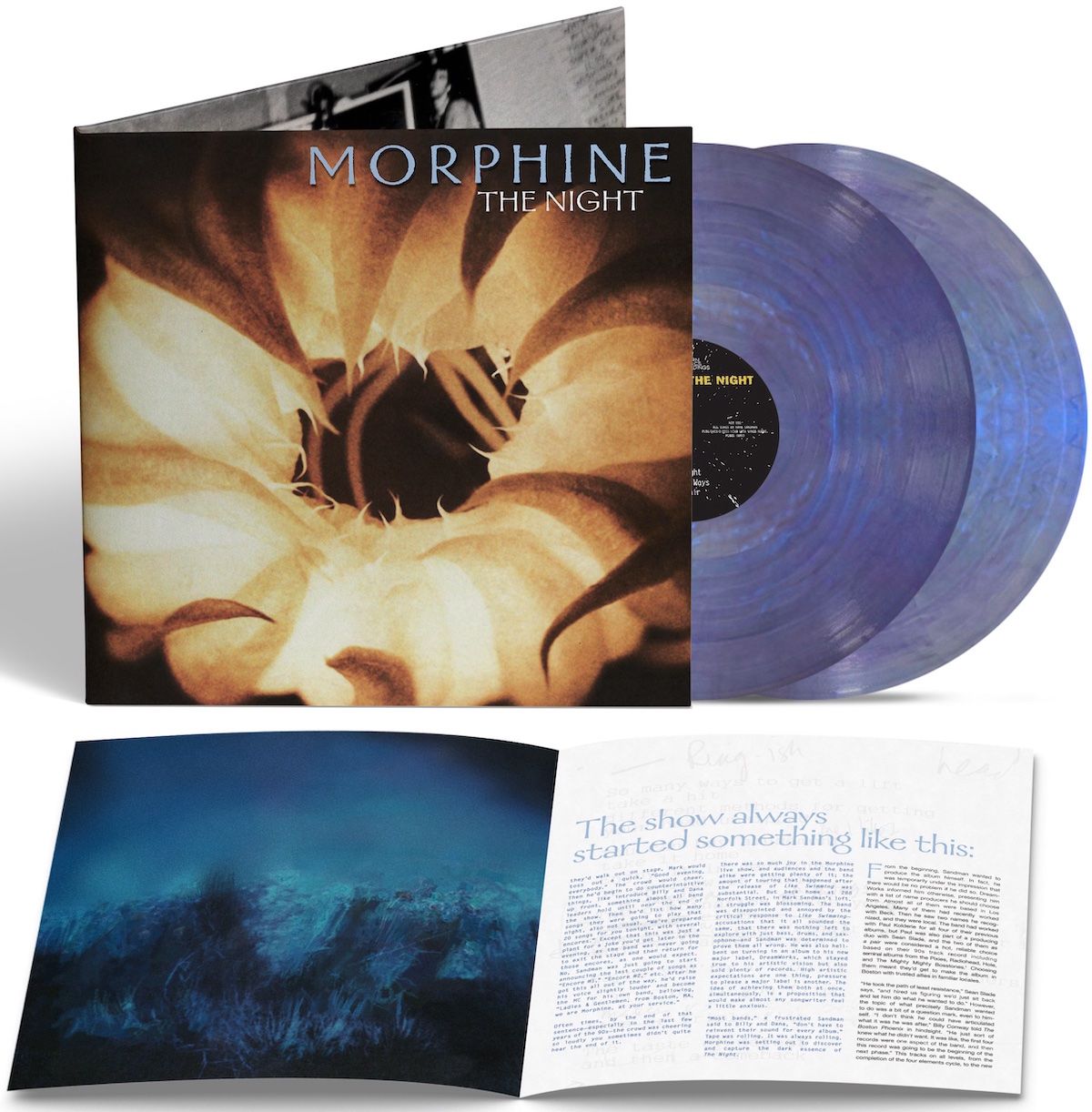
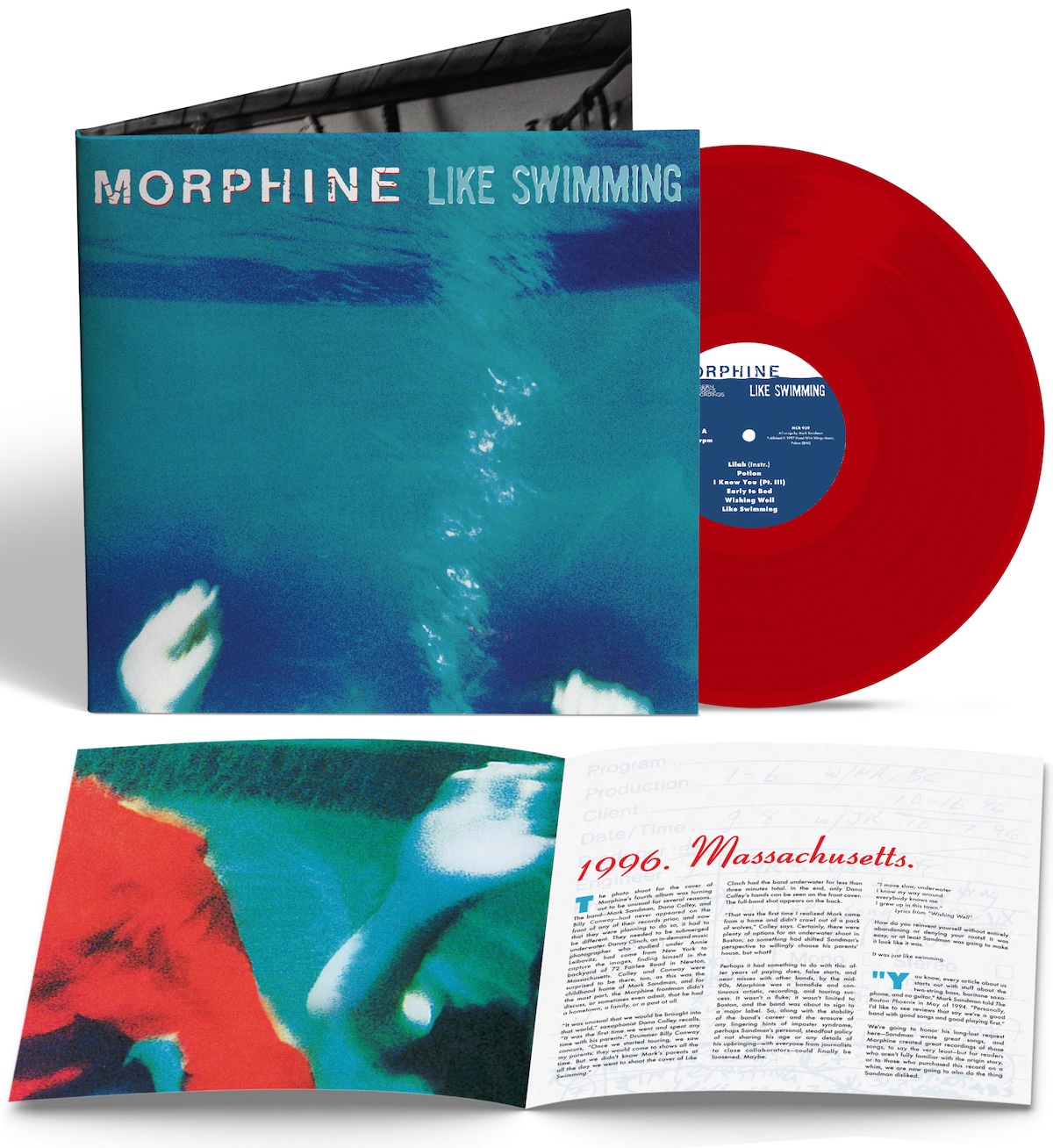
Dedicated to the memories of Sandman and Conway, both albums were produced with the full support of Morphine’s surviving members (drummer Jerome Deupree and saxophonist Dana Colley), as well as the band’s friends, family members, and collaborators — many of whom shared their memories with Walsh. The upcoming reissues follow the acclaimed 2011 vinyl reissue of Morphine’s landmark sophomore album Cure For Pain.
Formed in 1989, Morphine quickly gained a name for themselves in Boston’s underground scene, thanks to their unconventional instrumentation, clever and offbeat lyricism, and their utterly unique sound. Named after Morpheus, the Greek god of dreams, the trio (singer, songwriter, and bassist Sandman, saxophonist Colley, and drummer Deupree) delivered a mesmerizing blend of tonalities that were moody, yet seductive: Sandman’s intriguing baritone vocals and a two-string slide bass guitar (initially outfitted with just one string), Colley’s baritone sax (he was known to play two horns at the same time), and the vibrant percussion of original drummer Deupree and then Conway, who played drums in Sandman’s previous band Treat Her Right. When it came to classifying Morphine’s music, critics were at a loss. Was it jazz? Blues? Alt-rock? Beat poetry? To avoid the inevitable pigeonholing, Sandman coined his own genre: Low Rock.
Forming a creative partnership with producer Paul Q. Kolderie (whose credits read like a who’s who of alt-rock heroes, including Radiohead, Lemonheads, Hole and Pixies), the band released their critically acclaimed debut Good, in 1991. When they followed with 1993’s Cure for Pain, their fanbase grew exponentially, leading to tours across the U.S., Europe, Australia, and Japan. 1995’s Yes cracked the Billboard 200 — by then, the trio had scored several hits on college radio, while videos for Thursday (off Cure for Pain) and Honey White (off Yes) played on MTV. At the same time, Morphine’s music was gaining further exposure through synchs in major films, including David O. Russell’s feature debut Spanking the Monkey (1994), Beautiful Girls (1996), and the Grammy-nominated soundtrack for Get Shorty (1995). Amid the ’90s signing boom, it was only inevitable that the major labels would come calling. As the trio began work on their fourth studio album, they received an enticing offer from the newly founded Dreamworks. But signing with the L.A. label would be both a blessing and a curse — particularly for Morphine’s supremely independent frontman.
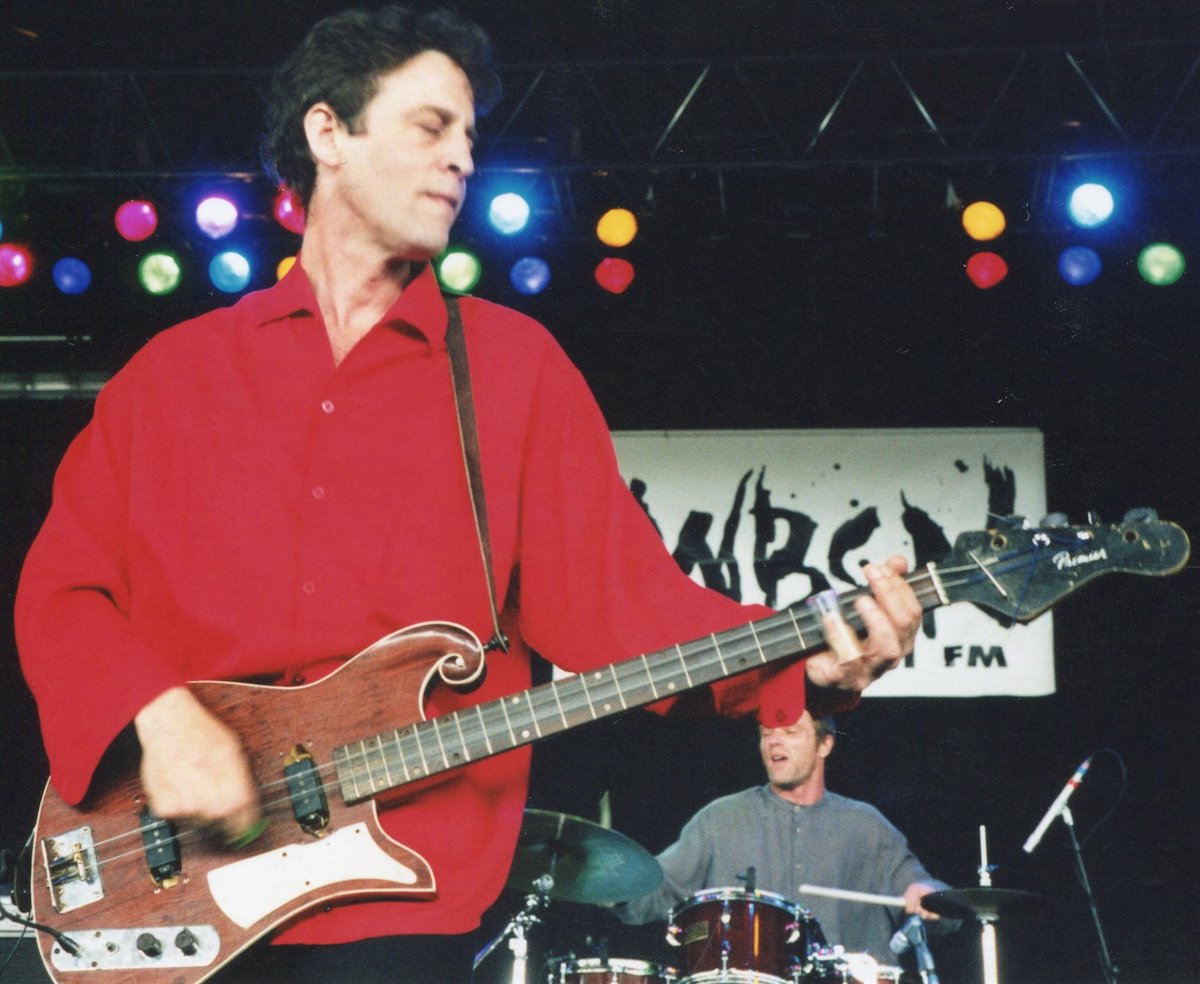
In his liner notes for Like Swimming, Walsh suggests that after years of uncertainties, the band’s newfound sense of security carried over into their songwriting. “Like Swimming is an album about getting into the flow of things finally going your way, about comfortably making use of your talents and doing it all with confidence, grace, and style,” he writes. That air of lightness marked a stylistic departure for the trio and can be heard throughout the album.
Single Early to Rise, for instance, offers a sense of nocturnal joie de vivre. Inspired by Benjamin Franklin’s proverb, the song is driven by a buoyant sax line, over which Sandman sings, “Early to bed and early to rise / Makes a man or woman miss out on the night life.” Speaking to Walsh about the song, Colley fondly recalls, “I think (Sandman) was trying to make a case for his lifestyle… Everybody in his world were nine-to-fivers, including his parents. That he was living his life this way, making his own hours, was a victory he wanted to celebrate.” That sentiment carries over to the hypnotic Eleven O’Clock, in which Sandman repeats one mantra-like phrase about leaving his house at the same hour every night.
The frontman also details the simple pleasures in life in the playful French Fries with Pepper, while Wishing Well (which offers a fantastic example of Colley’s simultaneous talents on two saxophones) finds Sandman confidently declaring, “I’m exactly where I want to be right now.” Indeed, Sandman was in a very good place. In addition to the highs of his career, he was also settling down with his longtime partner Sabine Hrechdakian. Subtle romanticisms can be heard in songs like Swing It Low, in which he sing-speaks assurances in hushed, rhythmic tones.
While Like Swimming is now held in high regard, not everyone took as kindly to Morphine’s major label debut. But consider the context. As Walsh notes, “In the 1990s alternative music world, fans cared about an artist’s perceived authenticity to a borderline extremist degree, punishing those they felt had sold out.” This was certainly the case for Morphine, particularly when it came to the media.
Despite the pushback from critics, however, the album’s commercial performance tells a different story. Released in March 1997, Like Swimming landed at No. 67 on the Billboard 200, becoming the highest-selling title of Morphine’s career. Early to Bed peaked at No. 10 on the Adult Alternative Airplay chart while its video, in which a group of children watch an inspired puppet show, earned a Grammy nomination for Best Short Form Music Video the following year. Yet, the trio — and particularly Sandman — felt a new sense of pressure following Like Swimming’s release. In his notes for the band’s fifth and final studio album The Night, Walsh writes, “Sandman was determined to prove (the critics) all wrong. He was also hell-bent on turning in an album… which stayed true to his artistic vision but also sold plenty of records.”
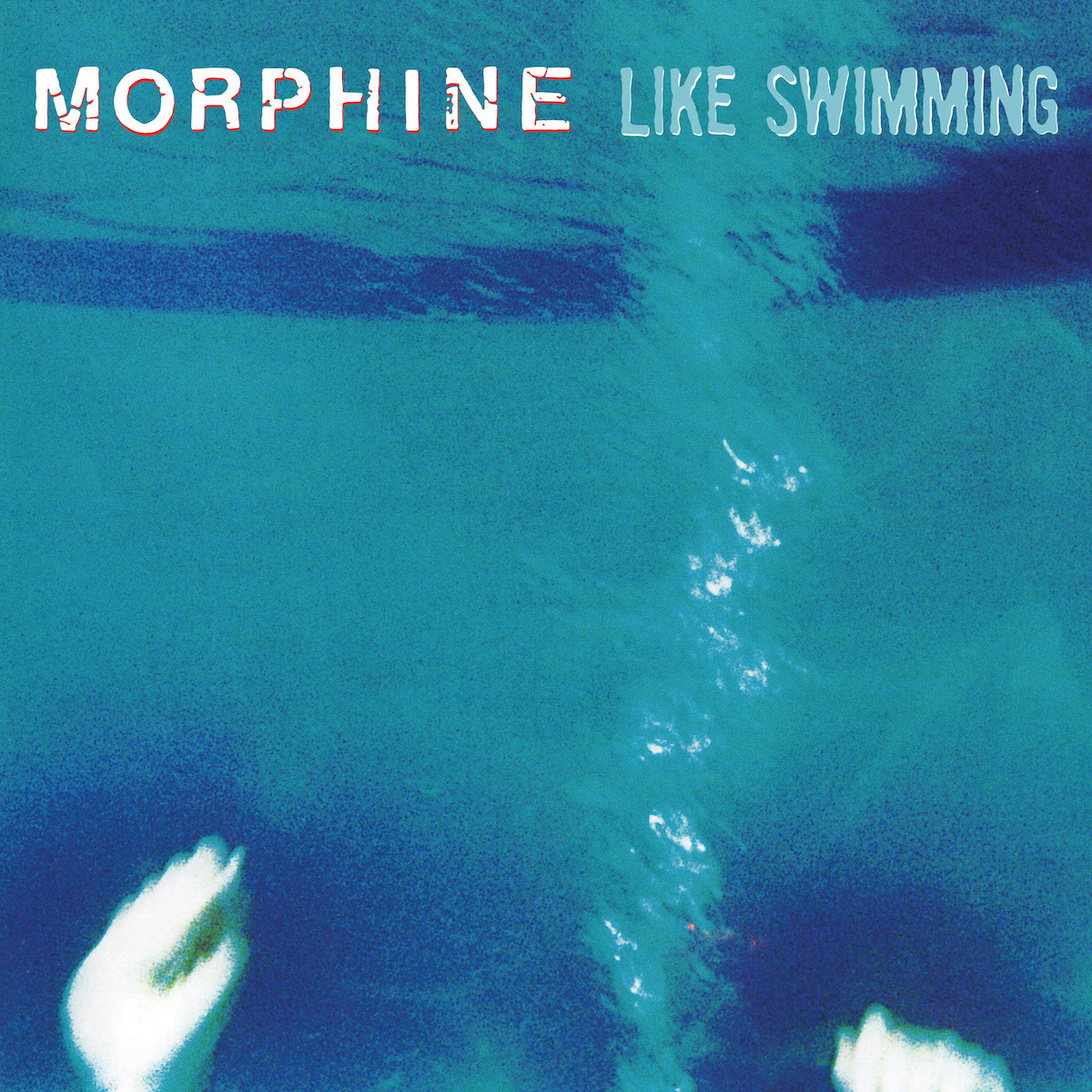
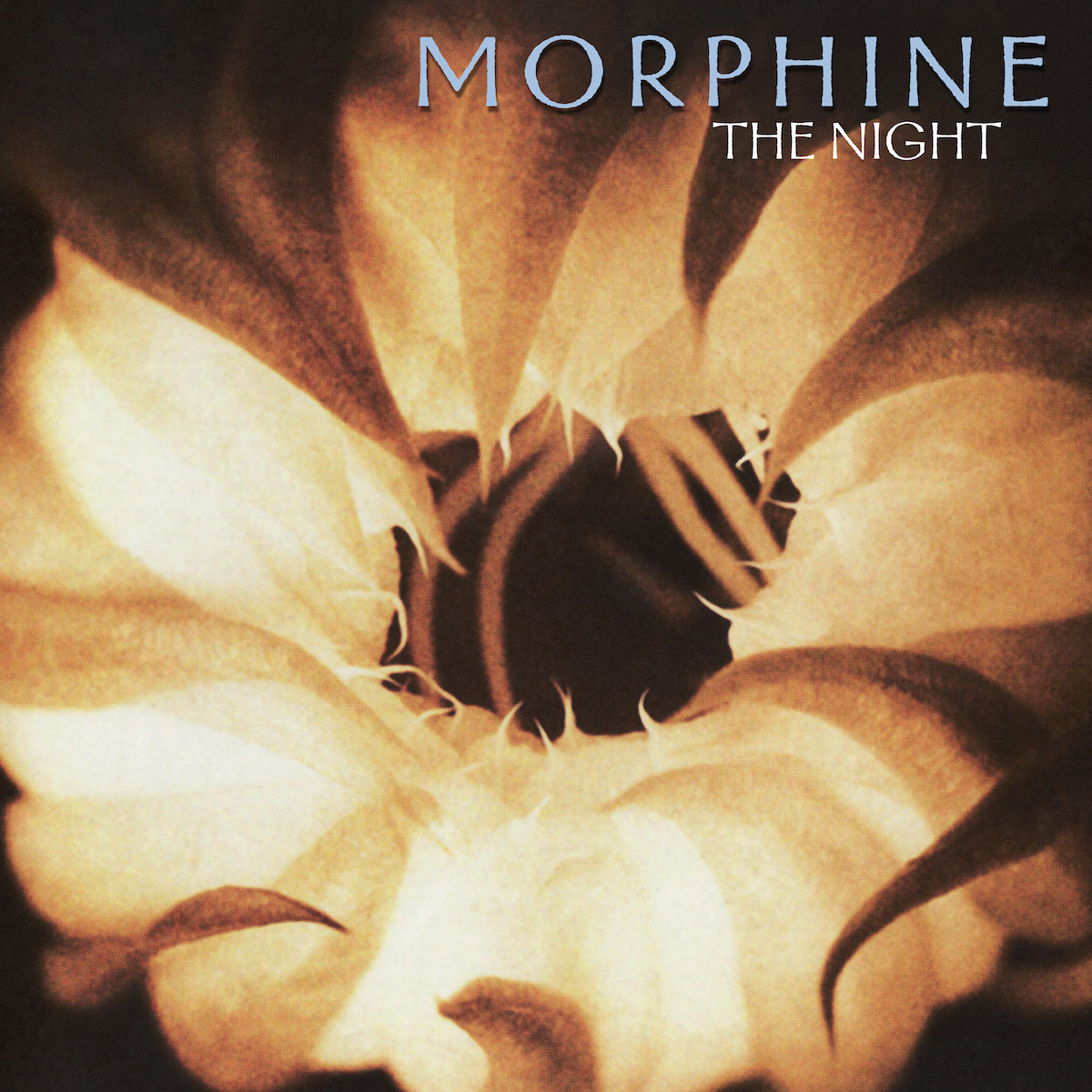
With anxieties rising, the trio entered the studio with Kolderie and his producing partner Sean Slade, as well as with assistant engineer Matthew Ellard. But the mood became increasingly tense — particularly between Sandman and Kolderie. Eventually, as things deteriorated, Sandman took over as producer, setting up shop in his loft, with Ellard at the controls. In addition to the changes behind the console, sessions for The Night were markedly different. Firstly, both Deupree and Conway took part in the recordings, effectively making the trio a quartet. Additionally, the band was joined by an array of guest artists, including the celebrated keyboardist John Medeski, and a string section, who added lush textures throughout the album.
The writing and recording process was also new for Morphine. For previous albums, the trio was largely familiar with the songs that they would be recording, having performed them ahead of time during shows. Whereas sessions for The Night, recalls Deupree, were “just jamming around… ideas. Mark might have had a sketch of a song, and we would come up with an arrangement and then play it forever… Then Mark would go back through the tape and find the section that he liked the best and build on top of that.”
Walsh expounds that this is why tracks like “A Good Woman Is Hard to Find fades in and out, as if it had been going on long before what you hear and that it continued long after the track ended (because it did!).” He continues, “Deupree recounts one session where he began warming up with a spontaneous drum pattern, soon joined by Billy. Sandman came running from the other side of the loft, hit record, and began playing bass… That moment became Track 2 on the record, So Many Ways.”
Among the other songs on The Night is the Boston-centric Top Floor, Bottom Buzzer, featuring an organ cameo by Medeski (who also lends his talents to the menacing I’m Yours, You’re Mine). In the upbeat, soulful track, Sandman describes an evening out at a friend’s house party. The enigmatic, Middle Eastern-inspired Rope on Fire, meanwhile, features a striking performance on the oud by Brahim Fribgane and accompaniment by cellist Jane Scarpantoni, violist Joseph Kessler and double bassist Mike Rivard. Scarpantoni, who has appeared on albums by Lou Reed, Beastie Boys and R.E.M., among many others, also joins the band on the opening title track, which Walsh proclaims to be “among the very best, hauntingly beautiful songs the band ever produced.” Strings also bolster the closing track, Take Me With You, a song that feels particularly poignant, given that Sandman would be gone by the time that The Night was released.
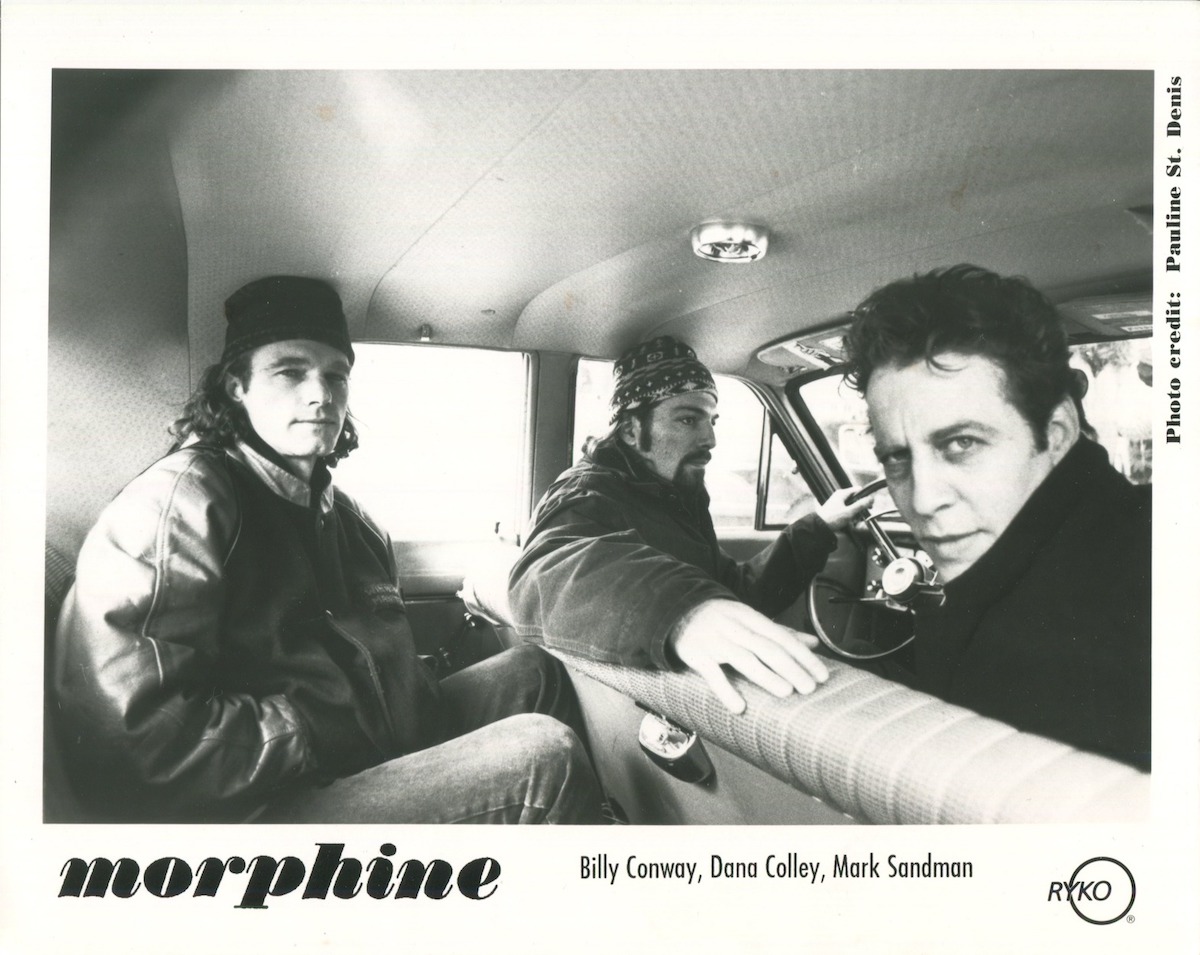
“From start to finish, this album would be Mark Sandman’s full creative vision realized,” writes Walsh. Colley adds, “For the first time in many years, I saw Mark satisfied again. He was like, ‘OK, we did it. This is the record. This is it.’ He was happy with the results.” After Sandman mixed the album, Morphine flew to Europe for a two-week tour. On July 3, 1999, during a concert at the Giardini del Principe in Palestrina, Italy, Sandman collapsed on stage, suffering a heart attack. Hours later, the 46-year-old musician was declared dead.
The Night was released months later, on Feb. 1, 2000. In a sad twist of irony, the album was met with broad critical acclaim — something that Sandman had worked so tirelessly for during his life.
To support the record and pay tribute to their late bandmate, Colley, Conway, and a variety of Sandman’s collaborators and friends toured as Orchestra Morphine. Nine years later, Colley, Deupree, and bassist/vocalist Jeremy Lyons formed Vapors of Morphine. While Deupree retired in 2019 (replaced by drummer Tom Arey), in addition to playing their own material, the group continue to perform Morphine songs through regular concerts and recordings.
Meanwhile, Sandman’s legacy lives on through Morphine’s music and the many artists the band has influenced and inspired along the way. Fans can visit the Morphine Loft, a virtual space celebrating Mark’s life, writing, art, and music curated from his archives, with exhibitions on Like Swimming, The Night, and Cure For Pain’s 30th Anniversary to come this fall. The site also has a forum where fans can share their own memorabilia and contribute thoughts on what makes Sandman and Morphine so unique. Those who want to visit the many landmarks associated with the band (including the building where The Night was recorded and Mark Sandman Square, just outside of the famed Middle East venue where Morphine played its first shows), can use Morphine’s map of Cambridge, Mass., included in the liner notes for The Night.”
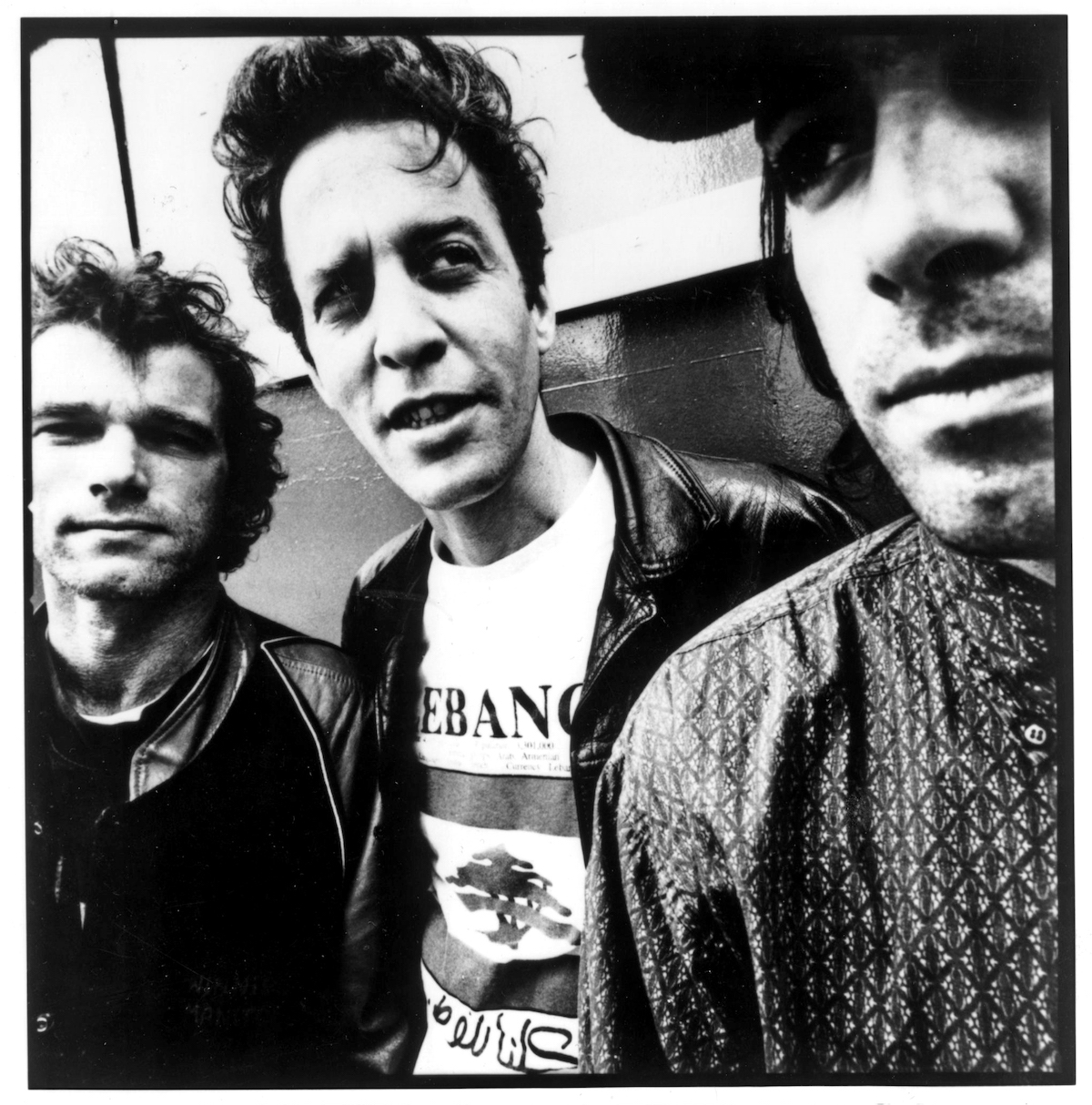
Like Swimming Track List
Side A
1. Lilah (Instr.)
2. Potion
3. I Know You (Pt. III)
4. Early to Bed
5. Wishing Well
6. Like Swimming
Side B
1. Murder for the Money
2. French Fries w/ Pepper
3. Empty Box
4. Eleven O’Clock
5. Hanging on a Curtain
6. Swing It Low
The Night Track List
Side A
1. The Night
2. So Many Ways
3. Souvenir
Side B
1. Top Floor, Bottom Buzzer
2. Like A Mirror
Side C
1. A Good Woman Is Hard To Find
2. Rope on Fire
3. I’m Yours, You’re Mine
Side D
1. The Way We Met
2. Slow Numbers
3. Take Me With You









